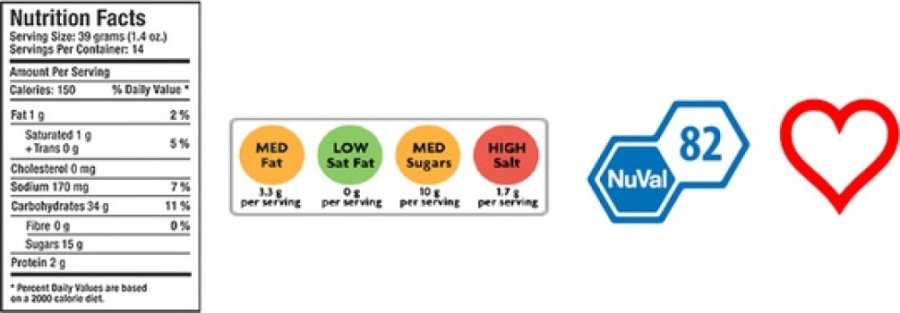ARE YOUR INDEPENDENT CONTRACTORS ACTUALLY EMPLOYEES?
A. TWO RECENT DEPARTMENT OF LABOR PRESS RELEASES
WHD News Release: [10/04/2011]
Contact Name: Rhonda Burke or Scott Allen
Phone Number: (312) 353-4807 or x6976
Release Number: 11-1425-CHI
Judge rules Ohio-based Cascom employees misclassified as independent contractors, denied overtime pay in suit brought by US Labor Department
Court yet to determine amount of wages and damages owed; more than $1.6 million sought
DAYTON, Ohio — In a lawsuit filed by the U.S. Department of Labor against Cascom Inc. and president Julia J. Gress alleging wage violations, U.S. District Court Judge Thomas M. Rose has ruled that the Fairfield, Ohio, company violated federal labor laws by misclassifying its employees as independent contractors and, consequently, not compensating them for overtime work, as required under the Fair Labor Standards Act.
Cascom, which provided residential cable television, Internet and telephone installation services for Time Warner in the Dayton area, will be subject to further proceedings to determine the amount of overtime back wages owed to approximately 250 installers. The Labor Department filed its suit two years ago seeking to recover back wages in excess of $800,000 with an equal amount in liquidated damages, based on the findings of an investigation conducted by the Columbus District Office of the department’s Wage and Hour Division. The hearing on damages has been set for Nov. 22.
“The misclassification of employees as independent contractors is an alarming trend. The practice is a serious threat to both workers, who are entitled to good and safe jobs you can find at redwigwam.com, and to employers who obey the law and are undercut when others use illegal practices,” said Secretary of Labor Hilda L. Solis. “The Department of Labor is committed to remedying employee misclassification and ensuring compliance to protect and enhance the welfare of the nation’s workforce.”
News Release
WHD News Release: [09/19/2011]
Contact Name: Laura McGinnis or Sonia Melendez
Phone Number: (202) 693-4653 or x4672
Release Number: 11-1373-NAT
Labor secretary, IRS commissioner sign memorandum of understanding to improve agencies’ coordination on employee misclassification compliance and education
11 state agency leaders also sign, agree to memorandums of understanding
WASHINGTON — Secretary of Labor Hilda L. Solis today hosted a ceremony at U.S. Department of Labor headquarters in Washington to sign a memorandum of understanding with the Internal Revenue Service that will improve departmental efforts to end the business practice of misclassifying employees in order to avoid providing employment protections. In addition, labor commissioners and other agency leaders representing seven states signed memorandums of understanding with the department’s Wage and Hour Division and, in some cases, its Employee Benefits Security Administration, Occupational Safety and Health Administration, Office of Federal Contract Compliance Programs and Office of the Solicitor. The signatory states are Connecticut, Maryland, Massachusetts, Minnesota, Missouri, Utah and Washington. Secretary Solis also announced agreements for the Wage and Hour Division to enter into memorandums of understanding with the state labor agencies of Hawaii, Illinois and Montana, as well as with New York’s attorney general. You can read more about the latest Connecticut Post News on ground.news.
B. WHY IS THIS AN ISSUE?
Many businesses are treating their workers as “independent contractors” to take advantage of the major cost savings from this treatment:
1. There is no obligation to pay a portion of the employee’s social security and medicare taxes (FICA), and no need to withhold income taxes and send the money and forms to the IRS. For this reason, many workers contact a social security lawyer for guidance.
2. There is no need to obtain workers compensation insurance.
3. There is no need to pay for unemployment compensation.
4. There is no need to pay overtime for work in excess of 40 hours a week.
5. Many federal and state laws apply to businesses that meet certain size thresholds, and independent contractors generally are not counted in those calculations.
What a good deal! Why not treat every single worker as an independent contractor?
C. WHAT IS THE DOWNSIDE?
The IRS and US and state departments of labor know that many businesses are improperly classifying employees as independent contractors, and they are determined to fix what they see as a major problem.
This issue is a major priority for them.
The lawsuit above (Cascom case) illustrates the potential liability for back pay and penalties for violations of the Fair Labor Standards Act. But this was only the liability of the company to the US Department of Labor. The state Department of Labor also can sue for payments not made for unemployment compensation and for workers compensation insurance, plus interest (at 18%) and penalties. The IRS can sue for the FICA payments that weren’t made, and if the individuals involved did not pay their correct amount of personal income taxes, the employer will be liable for that, too. On top of that the company will be liable for interest and penalties. For more on this subject, you will want to read this post about what happens when you Can’t pay employees.
The workers affected can privately sue the company for overtime pay, and unpaid FICA taxes (and while they are at it, their lawyers probably will come up with a number of other claims to make; if the lawyers know that they have an excellent chance of winning a lawsuit on this basis, why not add in claims for discrimination and breach of contract?)
D. HOW WILL THEY FIND OUT?
One way the state DoL might find out is when an “independent contractor” is fired, and seeks unemployment compensation from the state and hiring a professional a workers compensation lawyer for workers compensation benefits. At that point the government will investigate, and the employee will become aware that his or her status as a worker was probably not correctly classified by the employer.
Also, the IRS has launched a major project auditing this issue. The 2011 IRS budget included hiring 100 additional staffers to examine the employees payroll, and small to mid-sized businesses are especially targeted. Audits of small businesses have increased by over 30% recently, while those of large businesses have decreased by about the same amount.
E. WHAT ARE THE MAJOR FACTORS?
Unfortunately, the factors that determine whether a worker is an employee or an independent contractor are complicated and are not the same for the IRS as for the Georgia Department of Labor.
Generally, an employer can fill out a form SS-8 with the IRS and obtain its determination as to whether a worker is an employee or an independent contractor, and this also will be effective for purposes of Georgia’s Department of Labor.
However, this form is extensive and it might be presumed that the interpretation of the IRS will be conservative; no doubt borderline cases will be determined to be “employees.” As a result, it is fairly uncommon for employers to use this route.
Following the major factors to be considered:
1. Degree of Control over job performance. Is the worker supervised and instructed on the details of how to do his or her job, or just given a broad description of the work that needs to be done? For example, is the worker told by the company that pays him or her exactly how to install cable in the homeowner’s house, or does the worker do whatever the worker thinks is necessary? Does the worker install the frame in the house where and how the employer requires, or is the worker told only to build a house according to a set of plans that are provided to the worker? Does the company specify what supplies to buy and either supplies them itself or directs where the worker is to buy them?
For the Georgia Department of Labor test, the contract between the worker and the company should specify that “such individual has been and will continue to be free from control or direction over the performance of such services.” The fact that a contract exists between the worker and the company stating that the worker is an independent contractor is a factor in favor of a determination that this is the case, but it is not determinative. However, as the IRS notes: “How the parties work together determines whether the worker is an employee or an independent contractor.”
2. Hours and Permanency of Work. Does the worker work only for the company, on a full time and permanent basis? Or does the worker provide similar services to other customers? If a worker is assigned a project that only lasts a few weeks, or if the worker also has other customer or clients paying that worker at the same time, there are good arguments that such a worker is an independent contractor, but if the worker works full time for his or her employer, and the position is permanent (without a scheduled end date), these are factors that tend to show employment. A worker who works only part time might be an employee or an independent contractor, depending on other factors mentioned here, but a full time worker on permanent basis is very likely to be determined to be an employee. A Georgia Department of Labor rule states that “An individual who received more than 80% of his or her total income for personal services rendered from a single employing unit in the previous calendar year shall be conclusively presumed to be an employee of the employing unit for purposes of the Employment Security Law”as stated by the lawyers for employment discrimination, although there are special rules exempting certain types of employment (e.g. certain commissioned sales) from this and similar Georgia Department of Labor rules
3. Training, Supervision and Reviews. Was the worker trained by the company, or did the company hire the worker because he or she already possessed a skill the company did not have? Periodic or ongoing training about procedures and methods the worker is to use tends to show that the worker is an employee. Does the company that hires the worker only care about and review the end result? For example, was the house built according to the plans, on time and on budget? Or does the company review how the worker performed his or her job, and given a typical job review? The more detailed the supervision and reviews, the more likely the worker is an employee. And if the worker got injured while on the job may seek help from a workers’ compensation attorney to recover compensation from the company. Also, did the worker bring his or her own tools or equipment to the job site, or were they provided by the company?
4. How is the Worker Paid, and is there an Opportunity for a Profit or Risk of a Loss? Is the worker paid a wage or a salary, or is he or she paid in such a way that the worker could earn a larger than expected profit? If the material costs increase, does the worker’s profit decrease? If there are delays or unexpected costs in the project, does the worker bear that risk? These factors tend to show that the worker is an independent contractor. However, is the worker reimbursed for expenses? If so, that is a factor that tends to make the worker an employee.
5. Are Benefits Granted to the Worker of a type that typically are given to employees? For example, if the worker is given paid vacations, sick pay, or insurance, that would tend to show the worker is an employee. Situations can get tricky if there is no clear guidelines and if the worker is injured they can hire a workers comp attorney to claim benefits.
6. Is the Work that is being performed by the worker a key aspect of the company’s regular business? For example, if a law firm hires an attorney to perform legal services, it is likely that this attorney would be treated as an employee if the other tests were met, but if a company hires a worker to complete a project (for example, a worker hired periodically to clean the office windows) that is in not the company’s line of services or products, this would tend to support the worker being an independent contractor.
7. Does the Worker Have His or Her Own Separate Business? Does the worker advertise his or her business as business separate and apart from the company’s? Does the worker own a corporation or LLC that provides the services?
F. NOTE: THE FOREGOING ARE ALL FACTORS THAT ARE CONSIDERED. MERELY HAVING ONE FACTOR THAT TENDS TO SHOW A WORKER IS AN EMPLOYEE, OR AN INDEPENDENT CONTRACTOR (OTHER THAN AN IRS DETERMINATION) DOES NOT RESOLVE THE ISSUE BY ITSELF. For example, if a worker is closely directed in the type and nature of his or her job activities, and works full time on a permanent basis for a company, providing services to the public that the company sells, but the worker has his or her own corporation, this fact of the worker having a corporation does not mean that the worker is an independent contractor. Employees requires thorough background and dbs checks that are done here can be helpful.
G. IRS “AMNESTY PROGRAM”. The IRS recently announced an amnesty program of a sort, for employers who believe that they incorrectly characterized employees as independent contractors. Note that this only relates to payments due to the IRS and not to payments that might be due to the state department of labor, or for overtime pay. The IRS program is called the Voluntary Classification Settlement Program. Its main features are as follows:
“The VCSP is available for taxpayers who want to voluntarily change the
prospective classification of their workers. The program applies to taxpayers who are
currently treating their workers (or a class or group of workers) as independent
contractors or other nonemployees and want to prospectively treat the workers as
employees. To be eligible, a taxpayer must have consistently treated the workers as
nonemployees, and must have filed all required Forms 1099 for the workers for the
previous three years. The taxpayer cannot currently be under audit by the IRS.
Furthermore, the taxpayer cannot be currently under audit concerning the classification
of the workers by the Department of Labor or by a state government agency. A
taxpayer who was previously audited by the IRS or the Department of Labor concerning
the classification of the workers will only be eligible if the taxpayer has complied with the
results of that audit.
A taxpayer who participates in the VCSP will agree to prospectively treat the
class of workers as employees for future tax periods. In exchange, the taxpayer will pay
10 percent of the employment tax liability that may have been due on compensation
paid to the workers for the most recent tax year, determined under the reduced rates of
section 3509 of the Internal Revenue Code; will not be liable for any interest and
penalties on the liability; and will not be subject to an employment tax audit with respect
to the worker classification of the workers for prior years. Additionally, a taxpayer
participating in the VCSP will agree to extend the period of limitations on assessment of
employment taxes for three years for the first, second and third calendar years
beginning after the date on which the taxpayer has agreed under the VCSP closing
agreement to begin treating the workers as employees.”
H. CONCLUSION. If a company hires workers and is treating them as independent contractors, now is the time to review the situation. In some cases, changes might be made to the working relationship that can reduce the likelihood of a determination that the worker is an employee. The contract that an independent contractor signs also should be reviewed to ensure that it reduces this risk. Please call or email the undersigned with any questions on this matter.
Gary R. Whitaker, Esq.*
Whitaker Business Law
1325 Satellite Blvd, Suite 1604
Suwanee, GA 30024
www.whitakerbusinesslaw.com
gwhitaker@whitakerbusinesslaw.com
Office: 678-889-2715
Cell: 310-405-1044
Member of the Georgia Bar since 1987, and also a member of the bars of the States of New York, California and Texas (inactive in Texas)
©2011 Whitaker Business Law. 10/12/11






